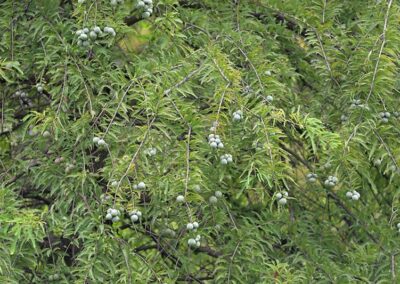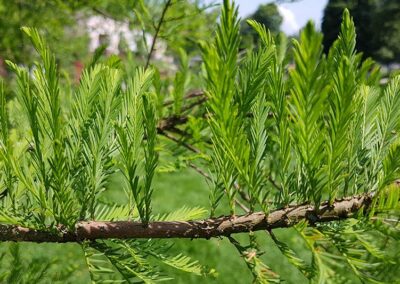
Bald Cypress

Pollen Type: Tree
Cross-Reactivity: Arizona Cypress
HS Allergy Extract: Cypress, Bald
Family: Cupressaceae
Genus/Species: Taxodium distichum
Common Names: Bald Cypress, Swamp Cypress, White Cypress, Tidewater Red Cypress, Gulf Cypress, Red Cypress
Distribution: Native to the southeastern United States. Coastal southern states from New Jersey south to Florida. West into central Texas and inland up to the Mississippi River
Locations: Along riverbanks; swamps, sloughs, and wet bottomland forests
Pollination Method: Wind-pollinated
Pollinating Period: March & April
Description: Bald Cypress is a deciduous cone-bearing tree native to the southeastern United States. It grows over 75’ and is conical shaped when young, becoming flat-topped as it ages. The tapering trunk is slightly buttressed at the swollen base and can develop cone-shaped “knees” in poorly drained areas. Its bark is fibrous with a stringy texture, and its color ranges from grayish-brown to reddish-brown. Its short, sage-green, linear needles are arranged alternately on new shoots and are twisted at the base, giving them the appearance of flattened, feather-like branchlets. The needles turn a striking copper color before falling off. Bald Cypress is monoecious, meaning that male and female cones grow on the same tree. The cones form on slender, tassel-like structures near the edge of branchlets. Male cones emerge on 4”-5” long panicles. Female cones are round, resinous, and green when young, later turing brown as the tree matures. Each cone contains 20 to 40 large seeds, which are released when the cones disintegrate at maturity.





